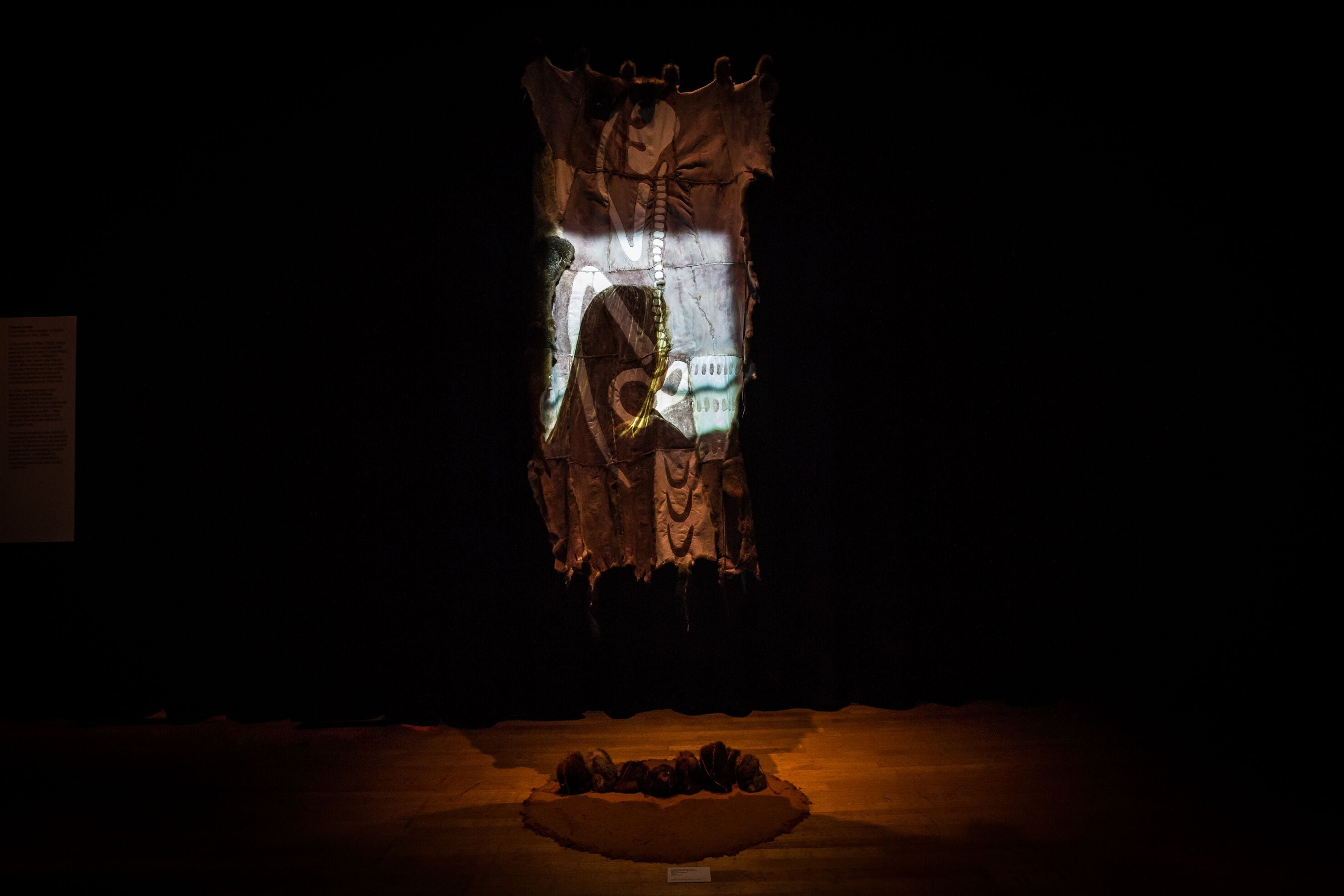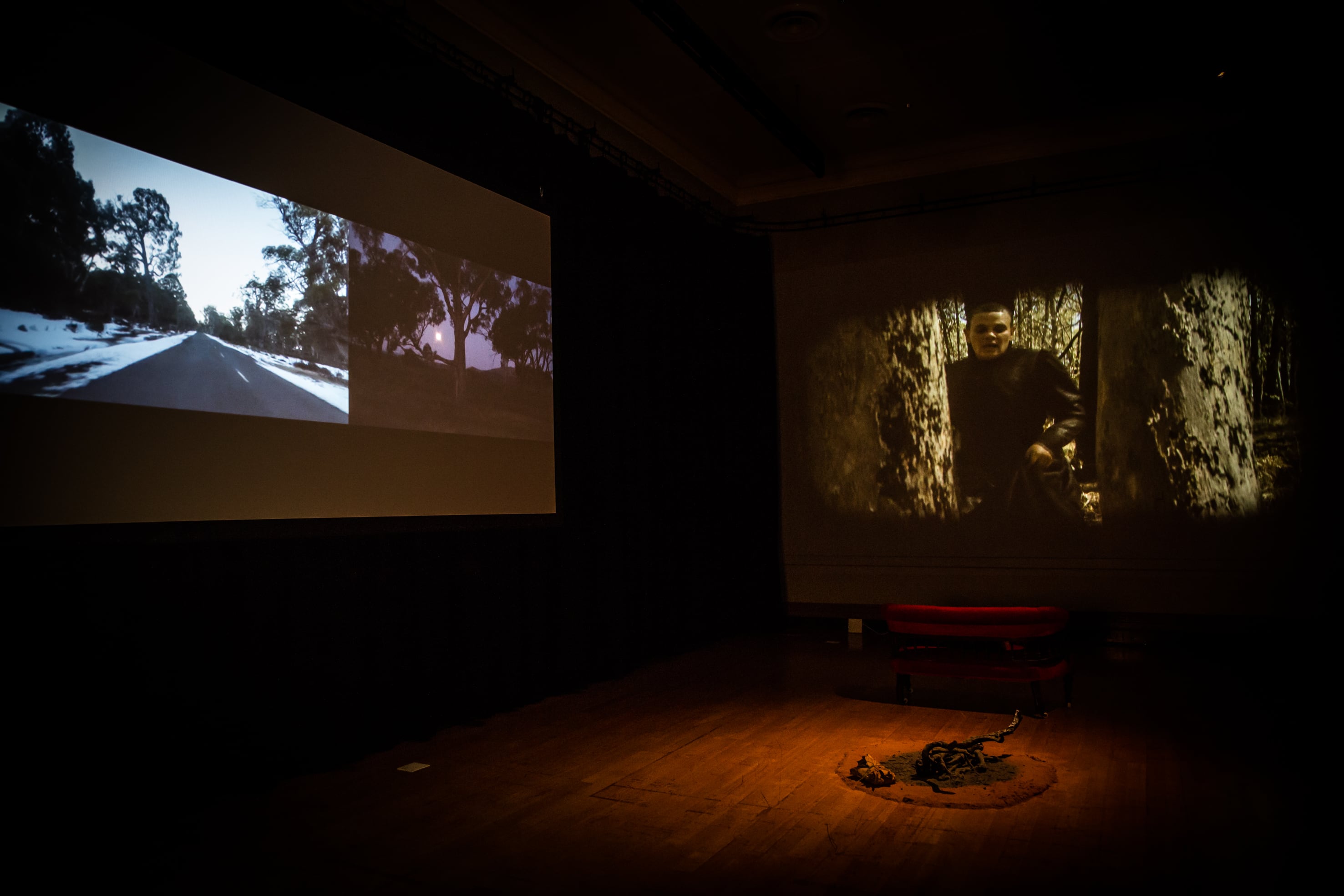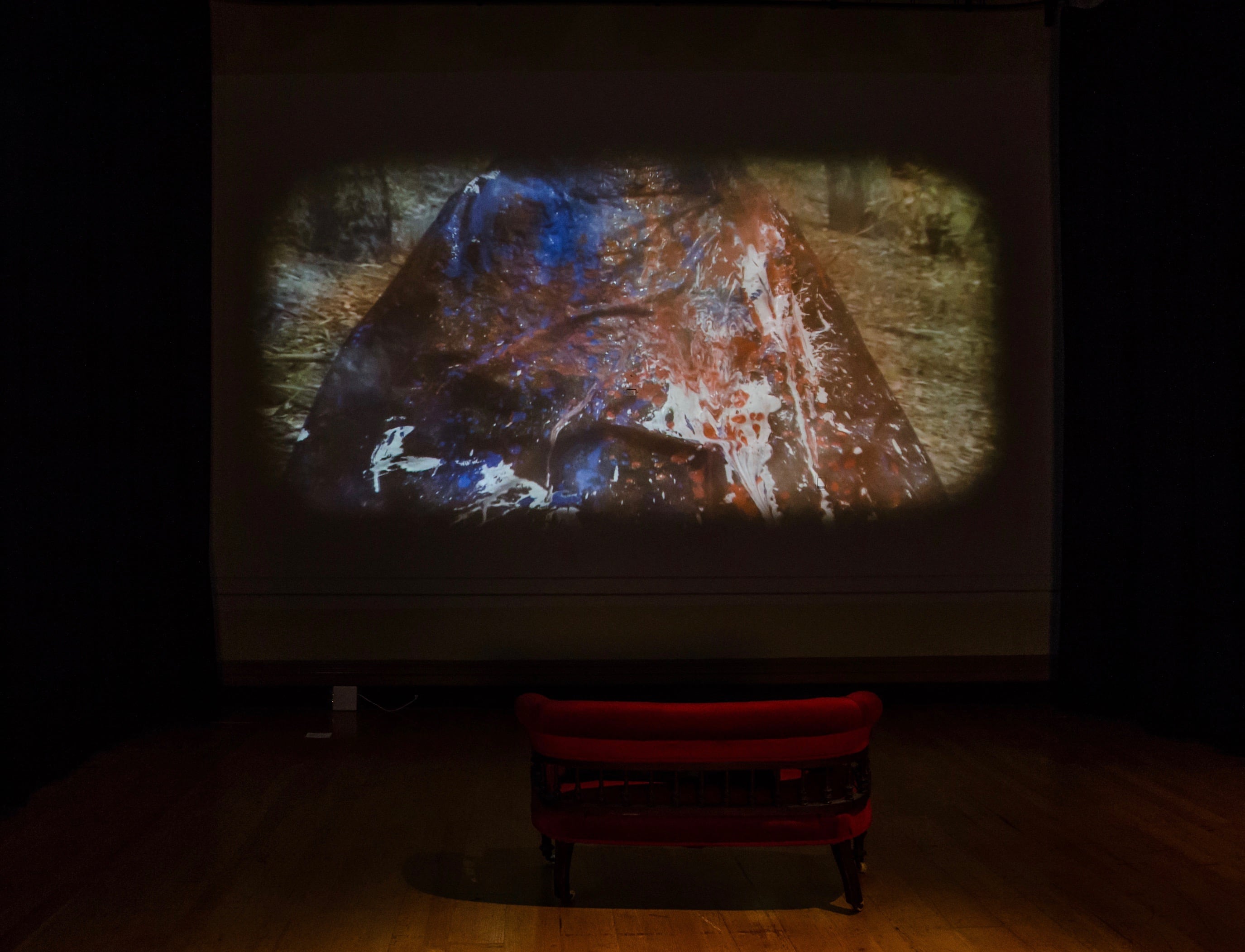


Artists: Vicki Couzens, Julie Gough, Genevieve Grieves, Dianne Jones, r e a
Curator: Genevieve Grieves
In the simplest terms, the history of colonialism is a history of erasure. The Australian colonial project sought to violently erase Indigenous lifeworlds and at the same time, to conceal this erasure. Authors of colonial history had a vested interest in obliterating our presence from the collective memory. In this landscape, the need to bear witness and to produce counter-narratives is pressing. As part of Yirramboi Festival, The Violence of Denial curated by Genevieve Grieves, brings together five established Aboriginal women artists whose work variously resists, intervenes in, intertwines with and subverts dominant narratives of history, creating new possibility.
The little daylight that enters the gallery space ascends a stairwell and passes into the room before sinking into the darkness of the black velvet curtains that conceal the gallery walls. The mise-en- scène – dim-lighting, dark colours, deep velvet curtains, a red velvet upholstered Victorian-style daybed – creates a dramatic stillness, while individual works (all video) are given space to breathe.
Grieves avoids an over-reliance on strategic cultural essentialism.1 Instead of looking to the past to retrieve a fixed, essentialist notion of Indigeneity, The Violence of Denial gathers works that variously re-frame and (re)tell memories, grief, belonging in a way that disrupts the perceived fixity of history, Indigenous and settler-colonial identities.
On entering the gallery, Julie Gough’s The Grounds of Surrender (2011) is the first work upon which the viewer fixes their gaze. It is difficult to catch a video work – on exhibition – from the beginning; like memory, the progressive flow of images is always already in motion. The horizontally split screen offers two frames, at times complementary and at others contradictory. At one moment, on the right screen, the camera calmly traces a country road that merges with the blue sky and dissolves into vacancy, while sunlight pierces the top-right corner of the frame. While on the left, counterpoised to this calm, a quote taken from ‘Govt. Order #9’ (1830) conveys the murderous intensions of colonial governance. In a later frame, green and yellow grasses outlining the road are replaced by winter’s snow-covered forest floor. The diachronic shift of season imparts a sense of vastness, which leaves the traces of past violence un-sutured.
The trace colonial violence has left on place is further explored in Genevieve Grieves’ subtle audio work To Perpetuate Memory (2017), which plays from a speaker in the corner of the room. The soft timbre of a male voice speaking in Language reverberates cultural memory. The words uttered swell amongst the otherwise soundless works in the gallery, reminding us that memory and meaning are encoded in language.
Threads of cultural memory are woven into Vicki Couzens’ pang-ngooteeweeng-wanoong (we remember) 2017. A possum skin cloak painted with ochre and incised with designs and motifs that speak of relation to Country and the practices of Gunditjmara peoples is suspended while a washed out video is projected into it. By projecting an image of herself gazing over Country, Couzens conveys the lively interconnectedness of the cloak’s inscription. The cloak is never a static object, video is not simply projected upon it, but absorbed into it, just as Aboriginal ways of knowing, being and belonging are embedded in the land Couzens gazes on. In a work that is felt as it is seen, the cloak inscribes and is inscribed with cultural memory.
The corporeality of pang-ngooteeweeng-wanoong is equipoised by Diane Jones’ found objects from what lies buried rises (2017), which is displayed on a HDTV monitor placed on a mantle. In a close-up of Jones’ face, incandescent light is refracted, giving the artist a reddish glow, while Jones’ gaze is lowered in a self-contained expression. In the frames that follow we are shown found objects – rusted tools and chain, time-smoothed fragments of glass and ceramics. As if making sense of these fragments, Jones subtly draws on the power of the archive, assembling and re-assembling these fragments in different configurations. The fragmentary state of these incomplete artefacts becomes a metaphor for memory. The found objects are not tied to the actuality of specific past events, yet the elusiveness of ‘factual’ connections with past events does not diminish the strongly felt sense that these fragments bear witness, giving rise to the possibility of transforming ‘silence into language’.2
Silence becomes presence in Poles/Apart (2017) by r e a. In this work the artist is silently shown wearing a full length Victorian-style black dress as she takes flight, weaving between trees in a fire-ravished forest. Deeper engagement with the work reveals r e a’s Aunty had fled colonial violence and servitude. In the final scene, we see the protagonist’s face contort in discomfort and anguish as she is dashed with red, white and blue paint, signifying Empire and alluding to American artist-hero Jackson Pollack’s Blue Poles (1952). The reference to Blue Poles rouses the political controversy its $1.3m acquisition by the National Gallery of Australia caused in 1973, cautioning the viewer not to over-politicise r e a’s work. Poles/Apart calls to mind colonial violence against Aboriginal women’s bodies, along with the attempt to paint Aboriginal bodies out of the landscape, contesting the historical and aesthetic erasure of Indigeniety. r e a’s performance of escape enacts collective memory through embodied experience, (re)inscribing an Aboriginal presence in the landscape.
The Violence of Denial stretches the affective intensities of memory, enunciating that which exists beyond the inherited confines of dominant renderings of history. There is a convergence between art’s creation of potentiality and history’s concentration on actual past events. By mediating the movement from memory to history, the artists validate the right to speak our histories and to choose the ways in which we do so. Our histories, though they have been systematically silenced, are enmeshed in the actuality of the past and in The Violence of Denial are illuminated – given new meaning.
Tristen Harwood is an Indigenous writer, cultural critic and independent researcher, a descendent of Numbulwar where the Rose River opens onto the Gulf of Carpentaria. He lives and works in the Northern Territory and Naarm.
